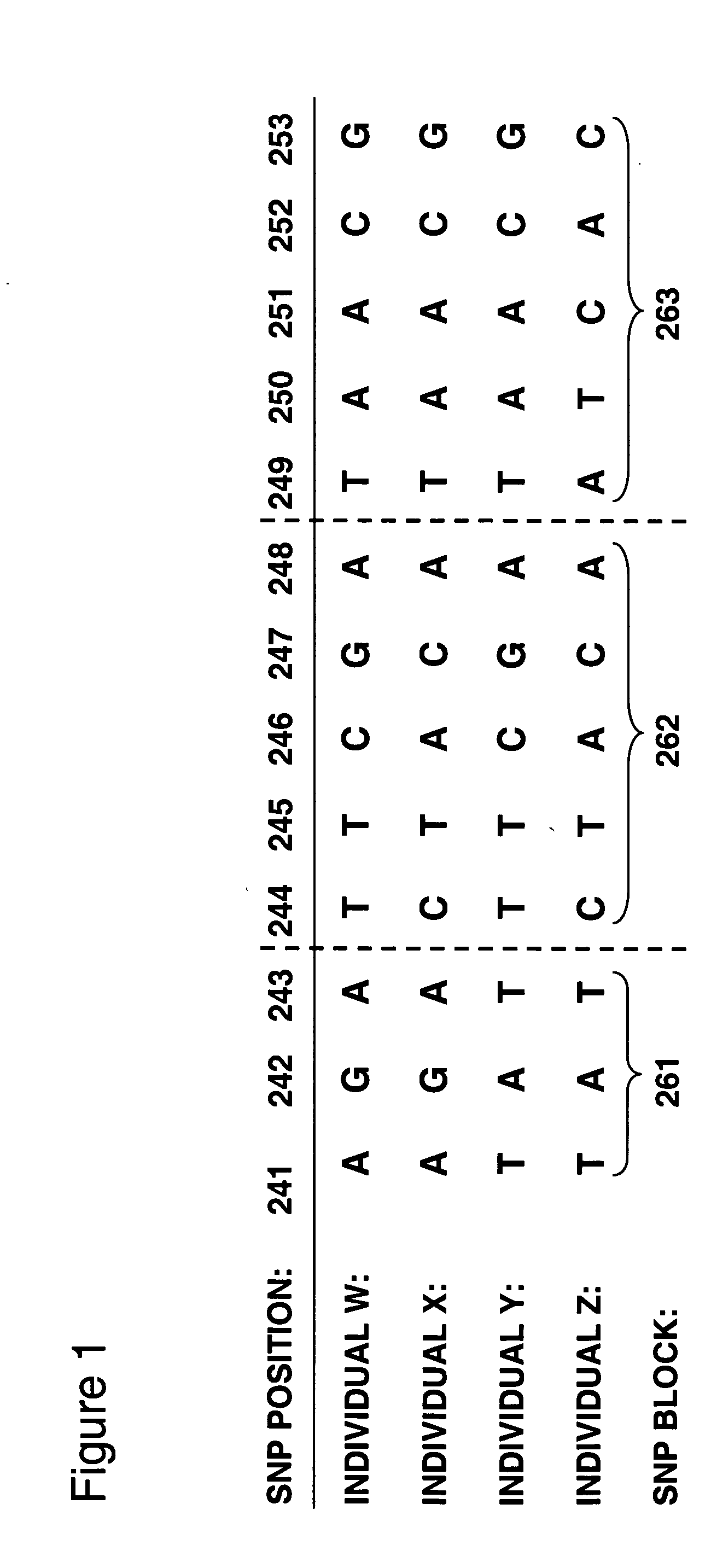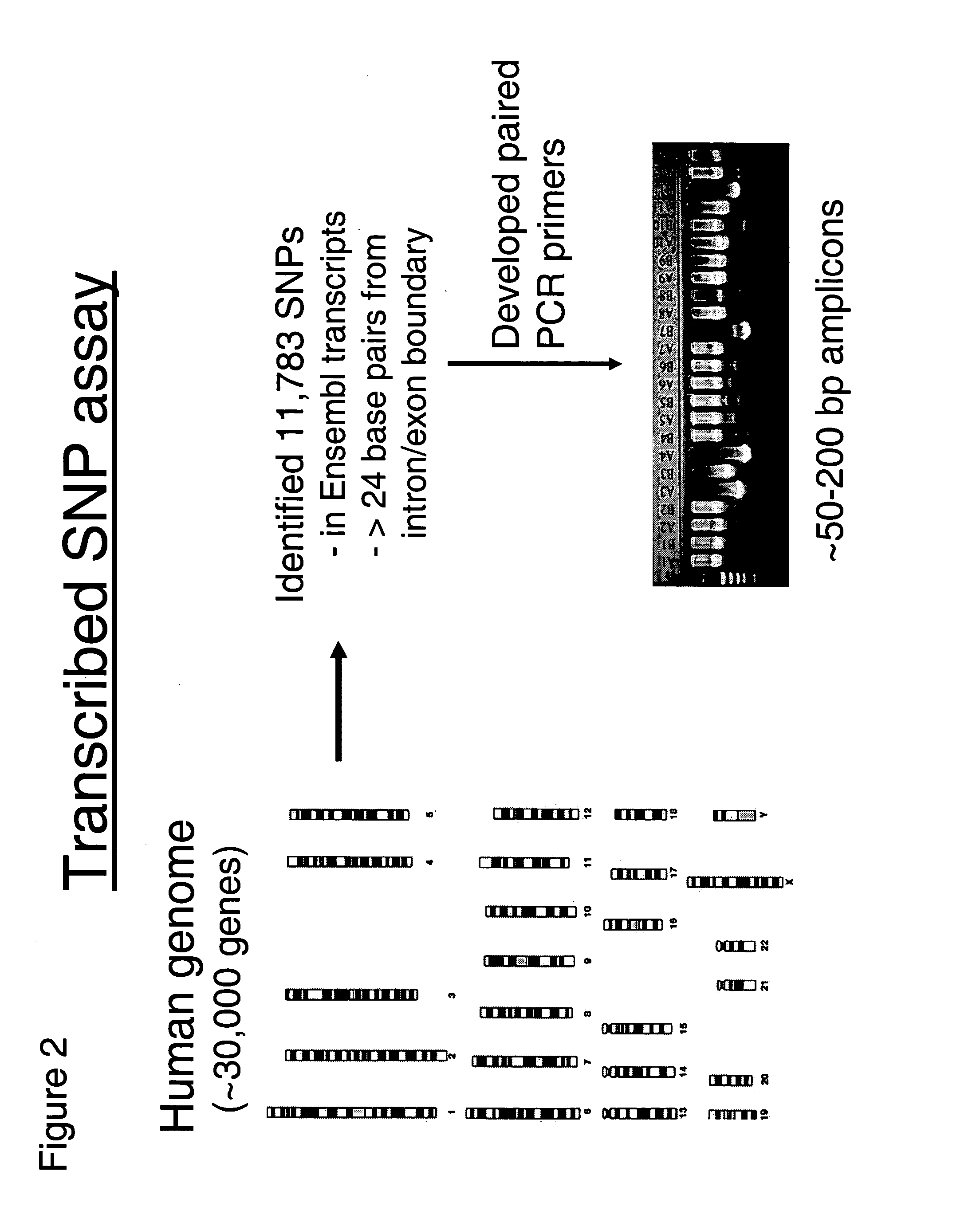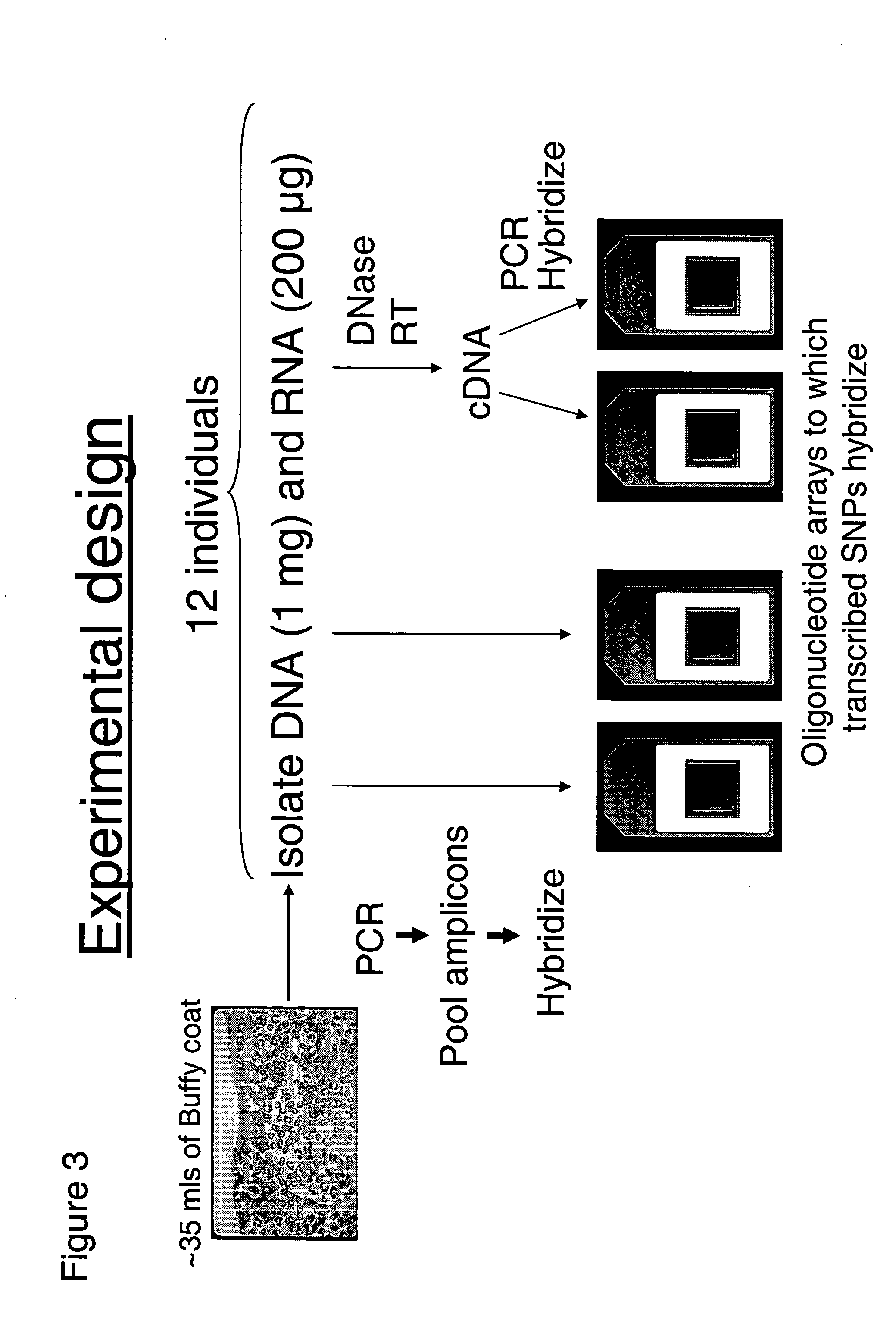Allele-specific expression patterns
a technology of alleles and expression patterns, applied in the field of allele-specific expression patterns, can solve the problems of insufficient application, inability to fully understand the whole genome, and inability to fully understand the genome,
- Summary
- Abstract
- Description
- Claims
- Application Information
AI Technical Summary
Problems solved by technology
Method used
Image
Examples
example 1
[0149] Materials and Methods
[0151] 12 buffy-coats (white blood cells-enriched blood samples, 35-37 ml) were obtained from the Stanford blood center (Palo Alto, Calif.) and white blood cells were isolated by centrifugation in Ficoll density medium (Amersham Pharmacia) (see FIG. 3). The cells were then resuspended in Trizol Reagent (Invitrogen Corp., Carlsbad, Calif.). RNA and DNA were purified in the same procedure according to manufacture's instruction. Typical yield of each sample was 200 ug-400 ug for RNA and ˜1 mg for DNA. Before amplification, RNA was treated with DNase I, purified again by phenol-chloroform extraction and ethanol precipitation and then subjected to reverse transcription to produce cDNA, followed by RNaseH treatment to remove the original RNA template. Both DNA and cDNA were diluted to 20 ng / μl to be used as templates for amplification.
[0152] Short-range PCR Reaction:
[0153] Primer selection for short-range PCR was performed as sh...
example 2
[0168] Identification of Haplotype Patterns Affecting Differential Allelic Expression of the krtl Gene
[0169] 2.1 Materials and Methods:
[0170] 8563 SNPs located in 4102 genes were genotyped in twelve individuals, and the expression of the corresponding alleles in individuals with a heterozygous genotype at each SNP location was examined using the methods described above. DNA and RNA were isolated from the twelve individuals and PCR primers flanking the 8563. SNP locations were used to amplify both the DNA and RNA in separate reactions. The PCR amplicons from the same sample and same chip design were pooled, labeled and hybridized to arrays.
[0171] The arrays used for genotyping and expression analysis were designed to interrogate not only the SNP position (0) but also the two flanking positions on each side of the SNP position (−2, −1, 1, and 2). Further, both the forward and reverse (sense and antisense) strands were tiled onto the array, and separate tilings were designed to hybr...
example 3
[0176] Identification of Functional SNPs in the krtl Haplotype Patterns
[0177] 3.1 Protein Binding Analysis:
[0178] To identify functional SNPs involved in the differential expression of the krtl gene, the twenty SNPs (SNPs 1, 4, 5, 6, 7, 9, 10, 11, 13, 14, 16, 17, 18, 19, 22, 23, 25, 26, 27 and 28) in the krtl haplotype block that were in linkage disequilibrium with the transcribed SNP that was used to assay the expression of krtJ were tested for protein-binding activity by electrophoretic mobility shift analysis (EMSA).
[0179] 3.1.1 Materials and Methods:
[0180] For each SNP tested in this assay, two double-stranded 25-base pair DNA oligonucleotides were constructed, one that corresponded to the H allele and the other that corresponded to the L allele, according to standard methods well known to those of skill in the art. Nuclear extracts from the HuTu80 epithelial cell line (a duodenum epithelial cell line obtained from ATCC and cultured in MEM alpha medium supplemented with 10% ...
PUM
| Property | Measurement | Unit |
|---|---|---|
| reaction volume | aaaaa | aaaaa |
| total volume | aaaaa | aaaaa |
| volume | aaaaa | aaaaa |
Abstract
Description
Claims
Application Information
 Login to View More
Login to View More - R&D
- Intellectual Property
- Life Sciences
- Materials
- Tech Scout
- Unparalleled Data Quality
- Higher Quality Content
- 60% Fewer Hallucinations
Browse by: Latest US Patents, China's latest patents, Technical Efficacy Thesaurus, Application Domain, Technology Topic, Popular Technical Reports.
© 2025 PatSnap. All rights reserved.Legal|Privacy policy|Modern Slavery Act Transparency Statement|Sitemap|About US| Contact US: help@patsnap.com



